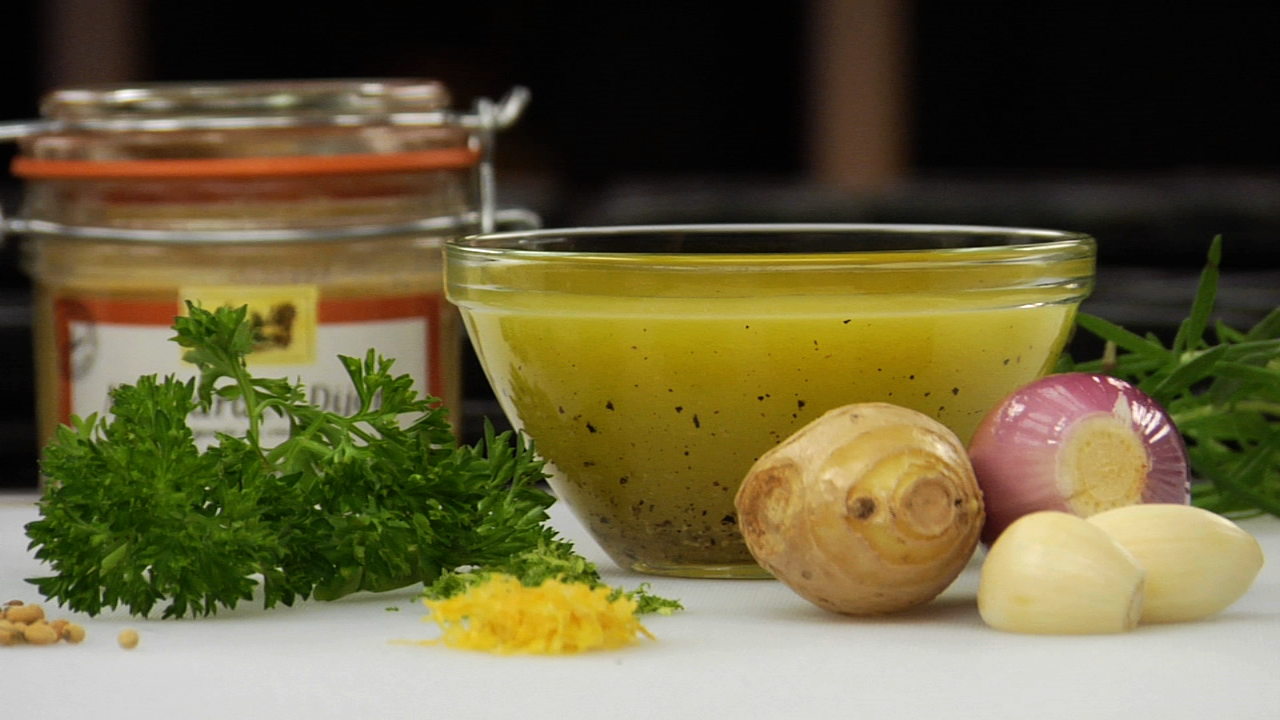Lessons > Salad Dressing & Vinaigrette Basics
Your culinary journey starts here
Lesson Overview
All chefs and seasoned cooks make their own vinaigrettes and dressings. They are extremely easy to make and most importantly, the cook is in complete control of what goes into them.
Most manufactured vinaigrettes and dressings contain a long list of unnatural ingredients and preservatives. Wh…
Click to expand...Lesson Objectives
At the end of this lesson you'll be able to:
- identify commonly used oils and acids used to make vinaigrette
- describe the difference between stable and unstable emulsions
- make a basic vinaigrette and learn how to vary it
Course Syllabus
|
|
START: Watch Lesson Platform Tour | |
| 1. | Salad Dressing & Vinaigrette |
|
| 2. | Complete Your Self Assessment |
|
| 3. | Unstable vs. Stable Emulsions |
|
| 4. | Oils for Vinaigrettes & Dressings |
|
| 5. | Acids for Vinaigrettes & Dressings |
|
| 6. | How to Make a Basic Vinaigrette |
|
| 7. | How to Vary a Vinaigrettes |
|
| 8. | Matching Oils & Vinegars to Greens |
|
| 9. | Practice Activities & Recipes |
|
| 10. | Lesson Quiz |
|
What People Are Saying
|
|
★★★★★ |
|
|
★★★ |
|
|
★★★★★ |
|
|
★★★★★ |
|
|
★★★★★ |
|
|
★★★★★ |
|
|
★★★★★ |
|
|
★★★★★ |
| Show More |
23 Videos
|
10 Tasks
Task 1: Salad Dressing & Vinaigrette
Task 2: Complete Your Self Assessment
Task 3: Unstable vs. Stable Emulsions
Task 4: Oils for Vinaigrettes & Dressings
Task 5: Acids for Vinaigrettes & Dressings
Task 6: How to Make a Basic Vinaigrette
Task 7: How to Vary a Vinaigrettes
Task 8: Matching Oils & Vinegars to Greens
Your Culinary Journey Starts Here!
Access to traditional and next-gen culinary foundations & techniques
Check out lessons, courses and tips
Trial Rouxbe for free, no credit card needed






